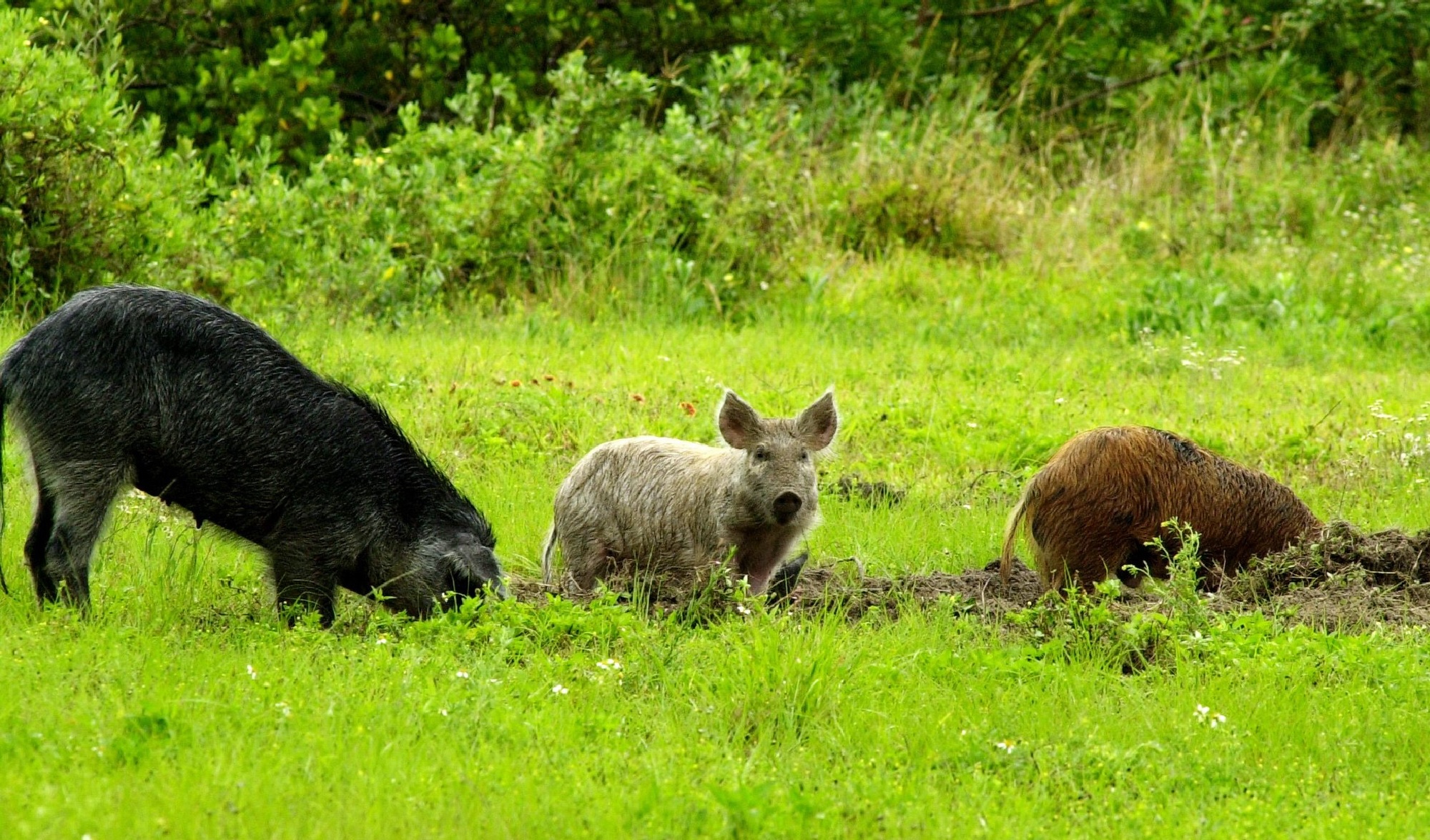It’s no mystery to what kind of damage feral pigs can create on a landscape. Their incessant rooting for food ultimately disturbs native ecosystems and rips up crops, and they’re often able to outcompete native wildlife species for resources. As if that weren’t bad enough, new research from a team of biologists at the University of Wisconsin-Madison offers some insight into just how much damage feral pigs on the Big Island are causing to Hawaii’s already fragile ecosystem.
It turns out that damage is significant, according to the study that was published in a recent issue of Functional Ecology. Researchers noticed that nonnative plant species like Kāhili ginger, carpet grass, and water smartweed are much more prevalent in areas with higher densities of feral hogs.
They found that study areas with higher feral pig population densities had a higher density of nonnative plant growth. Invasive plants were generally faster growing with lighter, more fragile leaves, compared to the slower-growing, hardier species native to Hawaii’s ecosystems. Researchers say this distribution is likely attributed to how feral hogs disturb soils with their snouts and hooves. This allows invasive plants to recover quickly and grow strong while damaged native species are slower to recover.
The researchers focused on contiguous, native forest in the Pu’u O Umi Natural Area Reserve in the northern region of the Big Island, where they studied four areas with varying levels of feral pig prevalence. Once the researchers established pig population estimates using camera trap data, they went through and recorded how much native versus nonnative plant growth occurred in each study area.
“Our study reveals how an invasive mammal can alter the makeup of a community by shaping conditions to favor plants with specific adaptations and accelerating the spread of non-native species,” the researchers write in a summary of the study. In other words, wherever feral hogs disturb the soil, they create prime conditions for invasive plants to thrive. This phenomenon should be familiar to habitat managers on the mainland: when forest soil gets disturbed after, say, a timber harvest or timber stand improvement in the Midwest, you can expect problematic plants like invasive Japanese stiltgrass to pop up.
Hawaii’s native ecosystems didn’t evolve with disturbance from native ungulates. Species like axis deer, goats, and pigs were all introduced to the island to be raised as livestock and for hunting opportunities. Much like how Hawaiian ecosystems didn’t evolve with wildfire, when pigs and axis deer rip through native vegetation, that vegetation hasn’t evolved to recover as quickly as other non-native vegetation.
Read Next: Hawaiian Axis Deer Are Causing Such Bad Erosion, the Sea Is Turning Brown
This makes Hawaii uniquely susceptible to the impacts of hoofed critters, especially when compared to states in the continental U.S. that did evolve with native ungulates. For example, native grassland and prairie plant species evolved with a high density of bison. Species in the Rocky Mountains evolved with elk and mule deer. The Northwoods of the Midwest and the Northeast evolved with whitetail deer and moose. But there were few heavy, hooved critters stomping around on the wild lands of Hawaii much before the late 18th century. (Research has shown that Polynesians kept pigs as livestock in Hawaii starting in the 4th century A.D., but it’s still up for debate whether today’s feral hogs originated with those pigs or the ones Captain James Cook brought in the 1770s.) Still, free-roaming stock like wild horses and feral hogs are causing damage in the U.S. where native animals aren’t.
Read Next: Hog Hunting: A Beginner’s Guide
All told, feral hogs in the U.S. are causing an estimated $2.5 billion each year in agricultural damage alone. Feral hog mitigation is complicated, in part because research indicates feral pigs are compensatory breeders, like coyotes. Basically, the more feral hogs you kill, the more they reproduce. It’s hard to get a headcount of feral pigs in Hawaii due, in part, to the nature of the terrain; unverified estimates put the state’s population as high as 400,000 — the same as the state of California.
Just like in Texas and the Southeast, though, there’s a robust hog hunting culture in Hawaii that’s capitalizing on the abundant critters. Hunting is also increasingly relied upon as a mitigation tactic; Many Hawaiians are increasingly calling on hog hunters to help manage the troublesome and sometimes intimidating critters as they venture out of the woods and into neighborhoods in search of food.

